Do you know how to keep a rooster in with laying hens? If yes, then very good, but if you don’t know then you should know how to keep a rooster in with laying hens. Because keeping a rooster in with the laying hens is very important if you want to produce fertilized eggs for hatching. Your hens will lay eggs without rooster, but those eggs will not be fertile. So, it is very important to have a rooster inside with your laying hens.
Keeping roosters inside the chicken coop with your laying hens is important if you want to produce fertile eggs and produce chicks by your own. But you don’t need to have a rooster in your flock for getting your hens to lay eggs. Keeping one or few roosters in your flock have some advantages.
Roosters become very protective and they are very helpful for keeping your flock free from predators. They also make interesting additions to your home flock. A strutting and crowing rooster add variety to your flock and gives your hens a sense of order and structure.
With a rooster around your flock, your hens will live happily and they will lay fertile eggs. Roosters are also good pets. However, learn more about how to keep a rooster in with laying hens.
Why Is Keeping A Rooster In With Laying Hens Important?
Keeping a rooster in with laying hens is very important, because roosters help to fertilize the eggs laid by the hens. This is very important for those who want to raise their own chicks for meat or eggs. Roosters also play a protective role in the flock by alerting hens to potential dangers and warding off predators. They also establish a social order within the flock. And this can help to reduce aggression among the hens. Presence of a rooster in a flock can encourage natural behaviors in the hens (such as scratching and foraging). This can contribute to their overall well-being.
How to Keep A Rooster in With Laying Hens?
Here we are describing the steps of keeping a rooster inside, with your laying hens. Generally roosters become more aggressive than your laying hens. And he may try to escape from the coop if he find anything outside the coop that is trying to harm, disturb or steal his hens. So reinforce your chicken coop perfectly, before introducing a rooster with your existing flock.
Step 1: Cover The Holes
Cover the holes or gaps of the fence with extra chicken wire if there any. For preventing an escape, fill in the holes at the bottom of the fence with clean dirt.
Step 2: Ensure Roosting Facility
Keep some extra roosting facility inside your chicken coop. Generally chickens roost and sleep off the ground. But your roosters should have their own perch. Usually roosters are larger and weights more than your hens. So ensure a strong and sturdy roosting place for them that can support his size and weight. They prefer to roost in higher place. Make the roosting with strong materials.

Step 3: You Can Give The Rooster A Separate Room
You can also try to keep your rooster in a separate small sized wire cage. Keep the cage in the middle of the coop. Leave the rooster in the cage for about an hour or until your laying hens no longer seem curious. Doing this will help your birds to acclimate themselves to each other and avoiding unwanted squabbling.
Allow the rooster for coming out at his own pace by opening the cage. After opening the cage, some roosters start exploring and charge out. On the other hand other roosters wait for his hens to come to him and investigate. Usually a little pecking and squawking is normal. However, remove the rooster and reintroduce him the next day or after several days if your hens are drawing blood.
Step 4: Allow The Rooster To Fully Mingle
Always allow the rooster to fully mingle with your laying hens. By nature, roosters take charge of the flock and all hens happily follow him and cluster around him while they eat or explore the coop and your yard. But this may not happen if something goes wrong. For example, if your laying hens don’t like the rooster or if the rooster become very aggressive. In this situation, remove the rooster from your hens and replace another good one.
Step 5: Provide Them Nutritious Food
Always keep tasty and nutritious food inside the chicken coop for your roosters and laying hens. Try to make your rooster understand that tasty food, lots of hens and other facilities are available for him inside the chicken coop. Thus you can make your rooster interested in hens and staying inside the coop.
However, keeping a rooster inside the chicken coop with your laying hens is not so tough. It’s simple. Just follow the steps mentioned above. Have fun!
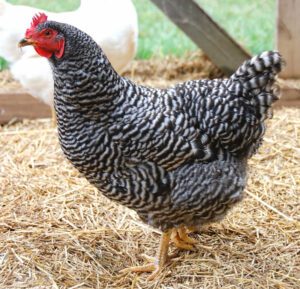
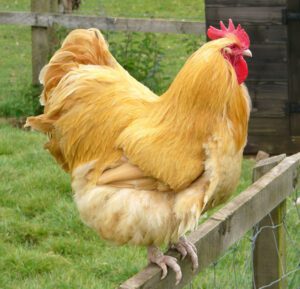
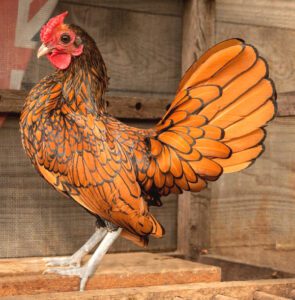
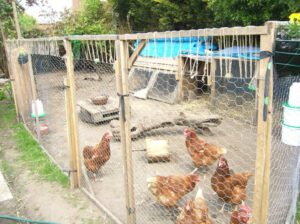
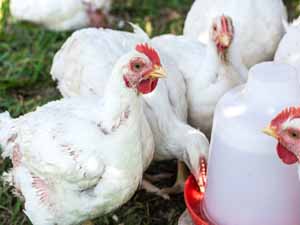
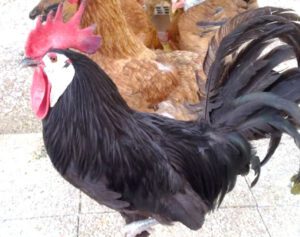
I have a rooster and only 3 hens left. He is tearing the feathers off their backs! I cannot find anyone to take the rooster and it is illegal to kill them on my property, not that I would want to, but I am at a loss…they are also loosing a lot of weight!
Check Facebook groups in your area for chickens and/or homesteading. Ask if anyone will take a rooster. If your chickens are a particular breed, a local breeder might be interested in a new rooster for diversifying genetics. Roosters usually need to be with over 5 hens. For a more aggressive rooster, 10-12 hens and a large pen might be necessary to spread his attention. If you’re able to catch him, you could try keeping him in a large dog crate (at 42 inches). You can put a roofing panel in top and move it to fresh grass every day until he finds a new home.